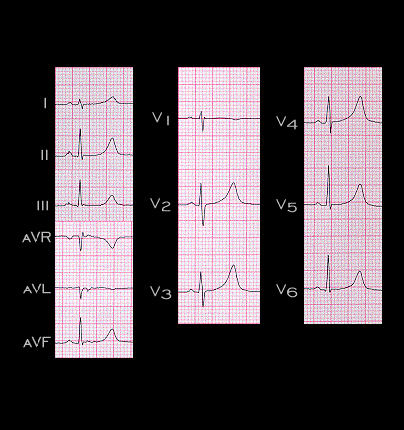
The ECG from the 15 year old girl presented earlier (page 5.6.5) is shown again here. It is the characteristic ECG of type 3 long QT, caused by a mutation in one of the sodium channel genes, and is virtually identical to the ECG associated with hypocalcemia.
